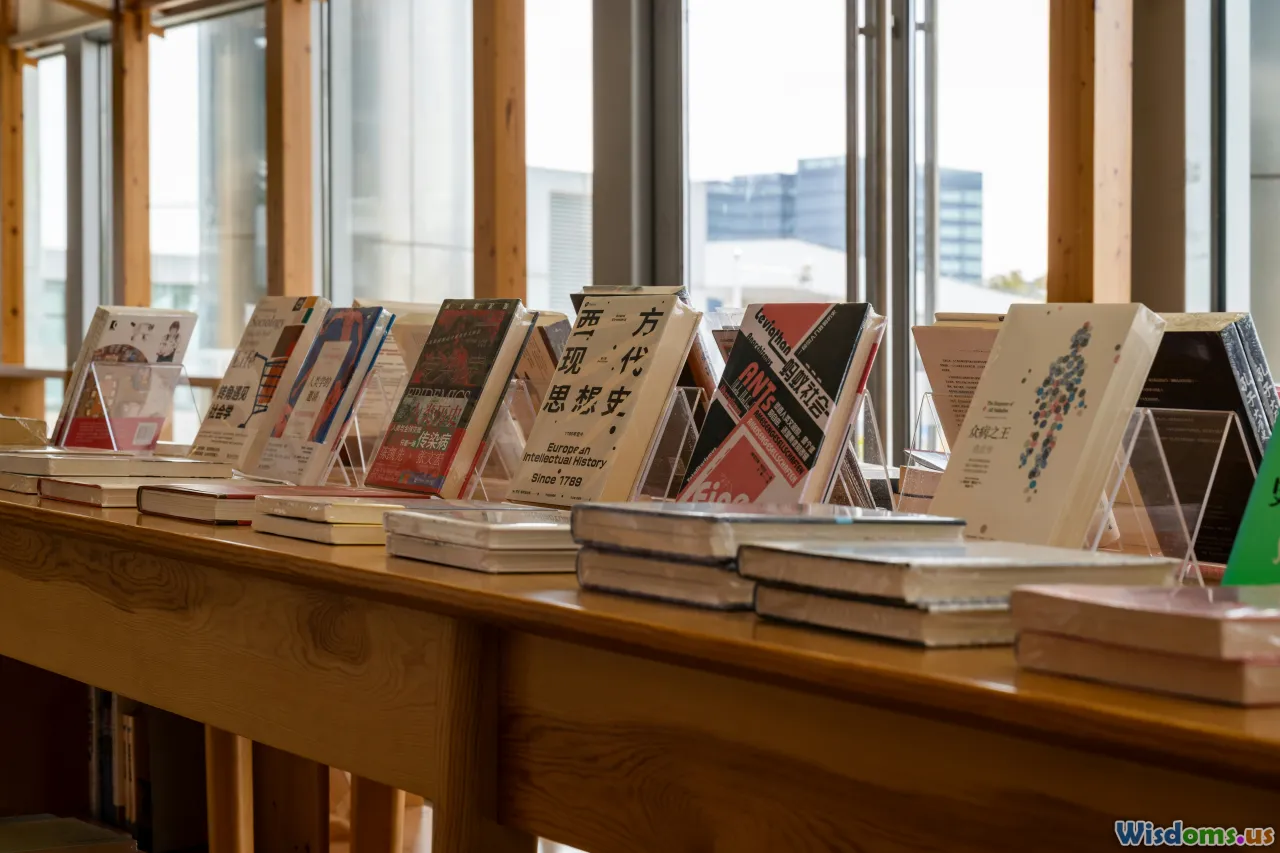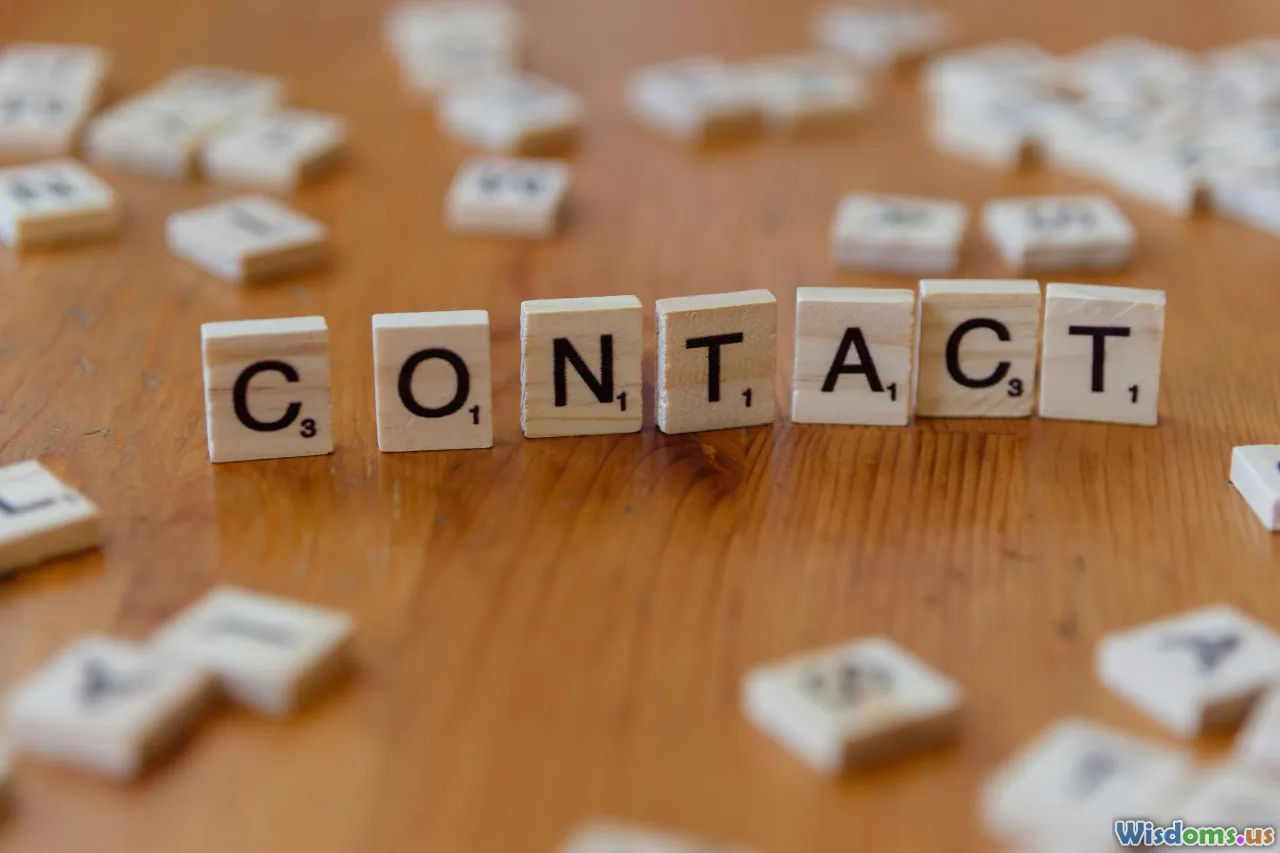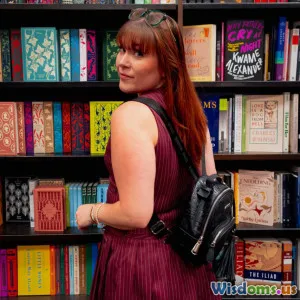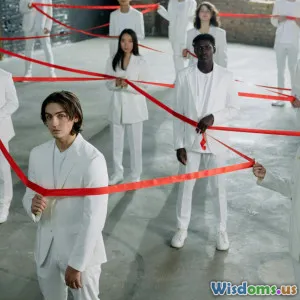
Secrets Behind Award Winning Translated Literature Success
35 min read Explore how award-winning translated literature succeeds—from translator-author synergy to cultural nuance, editing, market positioning, and prize strategy—illustrated with global examples and actionable insights. (0 Reviews)
Award-winning translated literature looks effortless on the night of the ceremony. A gleaming cover on the podium, a grateful author’s speech, a translator’s smile that might finally make the evening news. But the path to that moment is anything but accidental. It is a relay race among scouts, editors, translators, designers, publicists, and booksellers—each making hundreds of choices that either preserve a book’s soul or let it slip away. Understanding those choices is the real secret behind translated literature’s success.
What follows is a guided tour through the gears of this machine: how publishers decide which books to translate, how translators reconstruct voice in a new language, how editors tune rhythm and tone, why paratexts like titles and covers matter, and how marketing and prize ecosystems shape a book’s fate. Along the way, we’ll pull back the curtain with examples—from The Vegetarian to Flights to Time Shelter—and share practical techniques for anyone determined to shepherd a translated book from manuscript to medal.
The real gatekeepers: choosing what gets translated

Before a critic ever meets a sentence, acquisition editors and scouts have already sifted through hundreds of titles. In English-language markets, translated literature has historically hovered around the “three percent” mark—a shorthand popularized by the University of Rochester’s Three Percent initiative—so every slot on a publisher’s list is fiercely contested. That scarcity forces clear selection criteria.
What works in competitive lists:
- A distinctive voice with translatable potential: Editors ask not just “Is this great?” but “Can we make it great in English?” Books with voice-forward narration (think Han Kang’s precise eeriness in The Vegetarian, translated by Deborah Smith) often travel well because voice can be reimagined.
- A strong concept that can be pitched in one breath: “A time clinic that restores past eras” (Time Shelter by Georgi Gospodinov, translated by Angela Rodel) or “a polyphonic travelogue of bodies in motion” (Flights by Olga Tokarczuk, translated by Jennifer Croft) gives sales teams a handle.
- Evidence of domestic acclaim: Major home-market prizes, robust reviews, and sales provide crucial proof. While not determinative, a novel that has won a national award or topped lists at home signals staying power.
- Timeliness without trend-chasing: Editors hunt for themes that resonate globally—migration, memory, climate, identity—without relying on ephemeral news hooks.
How acquisitions really happen:
- Rights fairs are crucibles: At Frankfurt and London, foreign-rights agents pitch dozens of titles in rapid-fire meetings. The best pitches include 10–50 pages of sample translation, an English-language synopsis, and data on domestic reception.
- Translators tip the scale: Translators often act as scouts, sending early reads to trusted editors and even producing sample translations on spec. When Ann Goldstein advocated for Elena Ferrante’s Neapolitan novels, her credibility with Europa Editions mattered.
- Comparative titles and list balance: An editor’s slate must be coherent across a season. A spare, introspective Argentine novella might be balanced by a maximalist Korean family saga; both diversify a list and prevent internal cannibalization.
Actionable advice for publishers:
- Commission two independent sample translations for voice-driven books to test register and tone. Shortlisted samples can even be workshopped with the author before selecting a translator.
- Build relationships with cultural institutes (Goethe-Institut, Instituto Cervantes, Institut Ramon Llull, Literature Translation Institute of Korea). Their staff often surface overlooked gems and provide grant support for translation costs.
Translator as co-author: crafting voice, rhythm, and world

Great translations don’t mirror a text; they refashion it. The translator’s job is not just lexical matching but the reconstruction of cadence, register, and world-building in a new linguistic economy. That’s why award juries increasingly acknowledge the translator as co-creator.
What co-authorship looks like in practice:
- Voice calibration: Lydia Davis’s translation of Flaubert’s Madame Bovary opts for crisp, unadorned English that echoes Flaubert’s precision. Deborah Smith’s version of Han Kang’s The Vegetarian leans into eerie lyricism to carry a book steeped in ellipses and silence.
- Register mapping: Slang, honorifics, and dialects rarely have one-to-one equivalents. Translators build a “register map” to decide, chapter by chapter, what kind of English matches each character’s social position and psychology.
- Rhythm reconstruction: Sentence length, clause density, and punctuation are prosodic tools. Olga Tokarczuk’s fragmentary structure in Flights became an airy mosaic in English through Jennifer Croft’s nimble pacing and careful white space.
Tools of the craft:
- Style sheets: Translators maintain living documents tracking spellings, hyphenation, honorifics, and recurring motifs. These sheets help editors and proofreaders protect hard-won consistency.
- Parallel reading: Translators read adjacent literature in the target language to calibrate tone. A noirish Argentine thriller calls for different English DNA than a Baroque historical epic.
- Out-loud tests: Reading pages aloud is the quickest way to verify rhythm. If a paragraph sounds plausible in a public reading, it likely breathes on the page.
Actionable advice for translators:
- Craft a one-page “voice brief” with three anchor adjectives (e.g., “spare, prickly, elliptical”) and a short passage that exemplifies each. Share it early with the editor and author to align expectations.
- Keep a “risk journal” noting bold choices (e.g., collapsing an idiom, standardizing a dialect). If a prize jury asks, you can explain the rationale with precision.
Accuracy vs effect: when fidelity isn’t literal

A chronic misunderstanding dogs translated literature: that literal accuracy equals fidelity. In reality, staying faithful to a book’s effect often requires departing from surface structure.
Public debates make the stakes clear:
- The Vegetarian sparked discussion about liberties in English versus the Korean original. Critics and defenders argued over specific choices. Regardless of where one lands, the debate underscores that equivalence is a spectrum—semantic, tonal, cultural, ethical—not a single point.
- Murakami’s English translations by Jay Rubin and Philip Gabriel are famously “Murakami in English,” smoothing certain repetitions and idioms to achieve an effect English readers recognize as Murakami-esque. The result is a consistent voice across translators—a strategic editorial stance.
Decision frameworks that help:
- Function over form: Ask what a line does, not what it says. If a joke relies on a homophone absent in English, recreate the surprise, not the sound.
- Transparent paratexts: When a cultural referent resists translation, a concise translator’s note or endnote can do more than a clunky footnote on every page. Fitzcarraldo Editions often favors lean texts with a short translator’s afterword that contextualizes hard choices.
- Stealth glossing: Replace a culturally dense word with a slightly expanded phrase that carries meaning without stopping the story. For instance, using “lunar New Year supper” instead of an opaque holiday term relies on reader familiarity but gives enough context.
Practical guardrails:
- Create a three-tier intervention policy: Tier 1, literal but idiomatic; Tier 2, adaptive (modest restructuring); Tier 3, creative substitution (rare, flagged). Share tiered examples with the editor for alignment.
- Use spot back-translation only as a surgical tool. A second-language reader can back-translate a handful of tricky lines to verify no semantic drift, but full back-translation can be misleading noise for literary work.
Editing a translation: the quiet, iterative craft

Editing a translation is a specific discipline. You don’t merely edit the English; you edit the relationship between English and the source.
A robust process generally includes:
- Developmental edit: Checks architecture, pacing, and voice coherence. Are there seams where register shifts? Does an image recur with consistent valence?
- Line edit: Tunes rhythm, imagery, and diction. The editor queries places where the English feels unusually Latinate or phrasal verbs clutter pace.
- Bilingual review: A bilingual reviewer (sometimes the translator, sometimes a separate consultant) compares source and target in hotspots—wordplay, cultural idioms, technical terminology.
- Copyedit and proofread: Protect consistency, catch factual slips (currency conversions, timelines), and police typos. Style sheets are crucial here.
Workflow that works:
- Kickoff memo: Editor asks the translator for a 2–3 page memo outlining challenges and proposed strategies.
- Rolling batches: Instead of a single handover, deliver in 50–100 page tranches. Issues can be resolved earlier, saving rework.
- Shared decision log: Keep a changelog for character names, terms of address, and recurring imagery. A single source of truth avoids regressions in later drafts.
Quality fails to avoid:
- Over-normalization: Smoothing every foreign texture until the book reads like it was born in the target culture can drain it of its strangeness—the very thing juries reward.
- Patchwork prose: When multiple translators split a book, the line edit must harmonize registers. Otherwise, character voices fracture.
Cultural mediation without exoticizing

Award juries notice when a translation treats its source culture as spectacle. The goal is to guide readers without turning a culture into a museum display.
Techniques that respect both page and context:
- Minimalist signposting: Use context-dependent cues rather than heavy exposition. “She placed the chopsticks parallel on the rice bowl, careful not to cross them” communicates a norm without an essay.
- Sensitivity and cultural readers: When translating Indigenous, queer, or historically sensitive material, an informed reader can flag unintentional distortions. Their role is to interrogate the target-language framing, not “correct” the source culture.
- Terminology choices: Keep certain non-translatable terms that carry cultural weight (samizdat, saudade, han), but ensure they earn their keep via clarity in context or brief paratext.
Case example:
- In Time Shelter, the conceit of national memory rooms reverberates differently in the Balkans than in the Anglophone world. Angela Rodel’s English respects region-specific resonances while inviting global readers into the ethical questions of nostalgia and nationalism.
Practical advice:
- Build a “cultural risk register.” List terms, customs, or references likely to prompt confusion. Decide on a treatment (retain, stealth gloss, note) before line editing starts.
- Avoid tour-guide tone. Phrases like “as is customary in X culture” can feel paternalistic; embed meaning in action instead.
Strategic paratexts: covers, titles, and translator’s notes

Paratexts—everything that frames the text—can determine whether a book gets picked up in a store or scrolled past online.
Titles as translation:
- Renaming for effect: Tokarczuk’s Polish title Bieguni became Flights in English. Jennifer Croft and the publisher embraced a metaphor more legible to English readers while preserving the book’s migratory spirit.
- When to stay literal: Elena Ferrante’s L’amica geniale as My Brilliant Friend is both faithful and marketable. Over-clever titles can signal self-consciousness rather than substance.
Cover strategies that travel:
- Coherent imprint branding: Fitzcarraldo Editions’ stark blue (non-fiction) and white (fiction) covers have become shorthand for serious, prize-caliber literature. That brand equity reduces the friction of discovery.
- Localized palettes: A Brazilian edition may opt for saturated color, while a UK edition leans minimalist. Co-edition collaboration can align imagery while adapting to market aesthetics.
Translator visibility:
- Name the translator on the cover. The #NameTheTranslator movement has shifted norms; many prize juries and readers value transparency. Credit builds trust and attracts top translators.
Actionable checklist:
- Mock up three title-cover packages: literal, metaphorical, and conceptual. Test with booksellers and librarians; they are the earliest signalers of discovery friction.
- Include a one-page translator’s note. Focus on 2–3 interesting challenges and choices; avoid jargon. Notes spark media questions and deepen reader engagement.
Funding, prizes, and ecosystems that make risk possible

Translated literature is often economically fragile. Grants and prizes create the runway for risk-taking and the tailwinds for visibility.
Grant ecosystems to know:
- Cultural institutes: Goethe-Institut (German), Institut Français, Instituto Camões (Portuguese), Institut Ramon Llull (Catalan), Literature Translation Institute of Korea, Norwegian Literature Abroad (NORLA), and the Polish Book Institute all fund translation and sample costs.
- Publisher-side support: Some grants cover up to 70–100% of translation fees, enabling smaller presses to acquire ambitious titles.
Prize landscapes that matter:
- International Booker Prize: Awards both author and translator, spotlighting co-authorship. Winners see immediate sales uplifts and foreign-rights momentum.
- National Book Award for Translated Literature (US): Reintroduced in 2018, it has broadened media coverage and bookstore attention for translated titles in the American market.
- PEN Translation prizes, Warwick Prize for Women in Translation, and regional awards: These create a layered ecosystem of recognition beyond a single marquee prize.
Practical moves:
- Timeline mapping: Align your production schedule so finished copies are available before prize submission deadlines. Build in several weeks for longlisting/shortlisting buzz.
- Co-funding: Combine a translation grant with a marketing grant (where available) to support tours, digital campaigns, or retailer placement.
Data that moves minds: what sales and stats really say

There’s a persistent myth that “translated books don’t sell.” Data tell a more nuanced story.
- Market share: While translated titles have long been a small slice of Anglophone markets, independent research and bookselling data over the past decade indicate steady growth, with spikes tied to award news cycles and standout breakouts.
- Prize elasticity: Sales for winners and many shortlisted titles jump dramatically. After The Vegetarian won the International Booker (then a prize for a single book in translation), UK and international sales multiplied, sending the book into bestseller territory.
- Backlist effect: Prizes lift an author’s backlist and a publisher’s translated list. Olga Tokarczuk’s Nobel announcement drove readers toward Flights and Drive Your Plow Over the Bones of the Dead in English, sustaining long-tail sales.
Useful metrics for publishers:
- Read-through rate: Track how many readers move from a winning title to another book by the author or from the same imprint. This informs list strategy and reprint decisions.
- Preorder velocity post-longlist: The week after a longlist announcement often predicts shortlisting resilience; invest in reprints accordingly.
- Regional sales shape: Some translated titles over-index in urban markets and indie bookstores. Target events and ads where conversion is likeliest rather than blanket national spend.
Marketing playbook for translated titles

Prize-caliber books deserve prize-caliber marketing—smart, story-led, resource-efficient.
Core strategies that work:
- Lead with story, not “worthy”: Frame the book’s drama and stakes in your copy. “A woman refuses meat and unravels her family’s sanity” is a stronger hook than “an acclaimed Korean novel.”
- Translator as ambassador: Feature the translator in media pitches and events. Translators are articulate advocates who can unlock process stories journalists love.
- Bookseller partnerships: Early galleys, annotated by the translator or editor, create champions. Indie booksellers thrive on hand-sell talking points.
- Reading group kits: Provide discussion questions, short essays by the translator, and pronunciation guides. Book clubs are reliable engines for literary fiction.
Tactical schedule:
- T-5 months: Seed galley outreach to key reviewers, librarians, and booksellers. Offer the first chapter as a free download.
- T-3 months: Announce events, podcast appearances, and essays by author or translator. Pitch process features (“How to translate a dream sequence”).
- T-1 month: Release a short video of the translator reading a passage in both languages. Social posts featuring side-by-side lines intrigue readers.
- Post-launch: If longlisted or shortlisted, pivot ads and point-of-sale materials to highlight the recognition. Prepare fresh media angles (e.g., “10 words this book taught me”).
Low-cost wins:
- Endorsements from known authors or translators can flip skepticism to curiosity. A line from a respected translator carries particular weight with literary readers.
- Smart metadata: Include keywords for setting, themes, and author nationality to improve online discovery.
Indie presses vs big houses: different paths to the podium

Many translated prize winners come from independent presses, but large houses also deliver when they commit resources. Each has a distinct playbook.
Indie strengths:
- Curatorial identity: Imprints like Fitzcarraldo Editions, Charco Press, Europa Editions, And Other Stories, and Pushkin Press have earned reader trust. Their lists function as recommendation engines; readers try a book because of the logo.
- Agility: Faster decision cycles mean they can pounce on a hot title from a rights fair or a sudden global moment.
- Translator relationships: Many indies cultivate long-term collaborations with translators, leading to consistency and loyalty.
Big-house advantages:
- Scale in distribution and marketing: Bigger co-op budgets, stronger retail placement, and the capacity to scale reprints quickly after prize news.
- Global reach: Sibling imprints can coordinate co-editions across territories, harmonizing campaigns.
Hybrid strategies:
- Co-publishing partnerships: A small press publishes in one territory, while a larger house picks up another, sharing marketing assets and cross-promoting.
- Rights cascades: After prize recognition, big houses may acquire paperback rights or publish future works, while the indie benefits from backlist halo effects.
Audiobooks, ebooks, and the new life of translation

Digital formats extend the reach of translated literature and pose new craft questions.
Audiobooks:
- Casting matters: Choose narrators who can render foreign names and phrases confidently without caricature. For polyphonic novels, consider multiple voices.
- Pronunciation guides: Translators should supply audio-specific notes, including stress patterns and acceptable Anglicizations.
- Performance pacing: Dense, lyric prose may require slower narration and strategic pauses to preserve meaning.
Ebooks:
- Embedded notes: Hyperlinked translator’s notes can be tucked behind unobtrusive icons, avoiding footnote clutter.
- Typography: Preserve deliberate white space and section breaks; poorly converted ebooks can flatten a book’s architecture.
Discoverability:
- Samples: Offering an ebook or audio sample package—source paragraph followed by the translation—can delight curious readers and differentiate marketing.
- Libraries: Digital library platforms are fertile ground for translated titles; prioritize library-friendly DRM and pricing to seed word of mouth.
Working relationship: author, translator, editor

A resilient triangle among author, translator, and editor is the bedrock of excellence.
Communication norms:
- Cadenced check-ins: Monthly Zooms or tracked-comment sessions prevent surprises. Batch questions to respect the author’s time zone and workflow.
- Dedicated queries doc: Keep a living document of issues—terminology, dates, scene logic—so answers are searchable across drafts.
Contract basics:
- Fair pay plus royalty: Many translation contracts include a fee plus a modest royalty on net receipts (often 1–3%, varying by territory and publisher). Clear escalators for strong sales align incentives.
- Credit guarantees: Ensure the translator’s name appears on the cover, title page, and metadata. This is both ethical practice and good marketing.
Relationship hygiene:
- Boundaries around rewrites: Authors sometimes suggest changes in the translation that retroactively revise the source. Agree up front on the scope for source alterations.
- Shared publicity: Offer joint interviews where author and translator can complement each other.
Common pitfalls that derail prize potential

Even beautiful books can falter if a handful of common issues slip through.
- Flattened cultural texture: Over-explaining or sanding off specificities produces blandness. Juries gravitate to work that retains grain.
- Inconsistent naming conventions: Shifting from first name to surname or toggling honorifics confuses readers and signals sloppiness.
- Title misfires: Overly literal or abstruse titles dampen discoverability. Workshopping titles with booksellers is cheap insurance.
- Production shortcuts: Typos, widows/orphans, or broken diacritics in print undercut credibility—especially when jurors read closely.
- Thin translator notes: When reviewers and juries ask about choices, a thoughtful note arms the conversation. Without it, narratives can be hijacked by controversy.
Preventive measures:
- Red-team read: Assign a skeptical in-house reader to poke at pacing, clarity, and continuity before proofs.
- Night-before audit: Check retailer metadata, author names, and series fields. Mismatched metadata can silently kill online discovery.
How to build a prize-ready dossier

Submitting to prizes is its own craft. A strong dossier increases odds of attention and, crucially, equips jurors to advocate for your book in closed-room debates.
Core components:
- Translator’s note (700–1,000 words): Frame 2–3 translation challenges and how you solved them. Include one micro-case (a sentence or image) jurors can cite.
- Press kit: Bios for author and translator, 2–3 strong review quotes from home market (in translation), and a one-paragraph comparison to a known Anglophone book.
- Excerpt strategy: Select 20–30 pages that showcase range—dialogue, descriptive passages, and a high-stakes scene.
Timing and logistics:
- Calendar discipline: Build a Gantt-style schedule for longlist, shortlist, and winner announcements. Align print runs and advertising to each stage.
- Juror empathy: Write the cover letter for an exhausted juror with 150 books to sample. Clarity, brevity, and specificity are kindness—and strategy.
After submission:
- Be ready with rapid-response media assets: If longlisted, update the cover image and product pages within 24 hours. Prepare a short video of author and translator thanking the prize—social gold for juries and readers alike.
Case studies: how specific books broke through

Looking closely at winners clarifies how distinct factors intertwine.
Flights (Olga Tokarczuk, translated by Jennifer Croft) — International Booker 2018:
- Craft: Fragmentary structure demanded sensitive pacing and transitions. The English maintains a light, associative thread that is hospitable to readers encountering the form for the first time.
- Paratext: The shift from Bieguni to Flights clarified the book’s thematic focus for Anglophone readers.
- Ecosystem: Fitzcarraldo’s branding signaled “serious literature” and earned trust. The Nobel later amplified the backlist.
The Vegetarian (Han Kang, translated by Deborah Smith) — International Booker 2016:
- Hook: A startling premise with psychological stakes carried pitch and word of mouth.
- Debate: Translational choices sparked discussion, which, while contentious, kept the book in the cultural conversation—sometimes controversy functions as attention engine when the book sustains it.
- Momentum: Prize recognition unlocked mainstream coverage beyond literary pages.
At Night All Blood Is Black (David Diop, translated by Anna Moschovakis) — International Booker 2021:
- Voice: Incantatory prose and repetition required careful recalibration in English to avoid monotony while preserving ritual.
- Marketing: The war setting offered hooks for history outlets, while the translation’s sonic qualities made for compelling audio samples.
The Discomfort of Evening (Marieke Lucas Rijneveld, translated by Michele Hutchison) — International Booker 2020:
- Risk: Unflinching subject matter demanded a translator with a steady hand for register and tone.
- Press narrative: The author’s age and the book’s intense perspective provided a ready-made media story without reducing the work to a headline.
Tomb of Sand (Geetanjali Shree, translated by Daisy Rockwell) — International Booker 2022:
- Playfulness: Wordplay and tonal shifts across generations required inventive solutions. The translator’s note became a calling card, inviting readers into the process.
- Cross-border resonance: Themes of partition and aging found readers in multiple markets; prize recognition stitched those audiences together.
Time Shelter (Georgi Gospodinov, translated by Angela Rodel) — International Booker 2023:
- Concept clarity: The time clinics premise travels instantly in a pitch, while the novel’s ethical depths reward slow reading—a perfect combination for juries.
- Coordination: Strong collaboration between author, translator, and publisher enabled coherent messaging across interviews and events.
Lesson across cases:
- No single factor suffices. Voice craft, judicious paratexts, agile marketing, and ecosystem support must align. When they do, a difficult book becomes not only legible but irresistible.
Building a long game: from one title to a translated list

Sustained success in translated literature isn’t about one lightning strike; it’s about building a weather system.
List architecture:
- Balanced risk: Pair 1–2 stretch titles each season with accessible, high-concept books that can subsidize them.
- Thematic threads: Curate around recurring concerns—migration, memory, climate justice—so readers can journey across your list.
- Backlist care: Keep key titles in print, refresh covers periodically, and time promotions to anniversaries or news events (author birthdays, national holidays relevant to the book).
Translator network:
- Invest in talent: Offer professional development—residencies, workshops, mentorships—and pay on time. Translators are your antennas and your reputation.
- Build continuity: When possible, keep the same translator across an author’s oeuvre to preserve voice continuity.
Community and retail:
- Librarian partnerships: Librarians are powerful advocates for literary discovery. Provide educator guides and host translator-led workshops on reading in translation.
- Bookseller councils: Convene a small group of booksellers twice a year to advise on covers, merchandising, and event formats.
Data discipline:
- Track which hooks convert: If “mother-daughter reckoning” drives preorders better than “postmodern mosaic,” teach your copy to hunt for emotional cores.
- Pilot programs: Test regional tours (e.g., Pacific Northwest indie circuit) with two translated authors traveling together. Cross-pollinate audiences.
Sourcing pipeline:
- Build relationships with foreign-rights agents who specialize in territories aligned with your list. Commission regular market memos reporting trends and hot debuts.
- Sponsor translation prizes or sample-translation contests. You’ll discover voices earlier and burnish your imprint’s profile.
The secret, if there is one, is that prize-winning translations are not accidents. They are the outcome of principled choices, disciplined processes, and a stubborn commitment to let a voice cross a border intact—and then thrive in a new home. Each decision, from the first whispered recommendation at a rights fair to the final comma in the proof, is an opportunity to serve that voice. Do enough of those well, and the night of the ceremony stops looking like luck and starts looking like what it is: a long, careful conversation finally overheard by the world.
Books & Literature Literature Publishing Book Marketing Literary Awards and Honors translation Case Studies market positioning Writing & Editing translated literature literary translation international book prizes translator-author collaboration cultural nuance co-editing rights and grants prize submissions
Rate the Post
User Reviews
Popular Posts

















